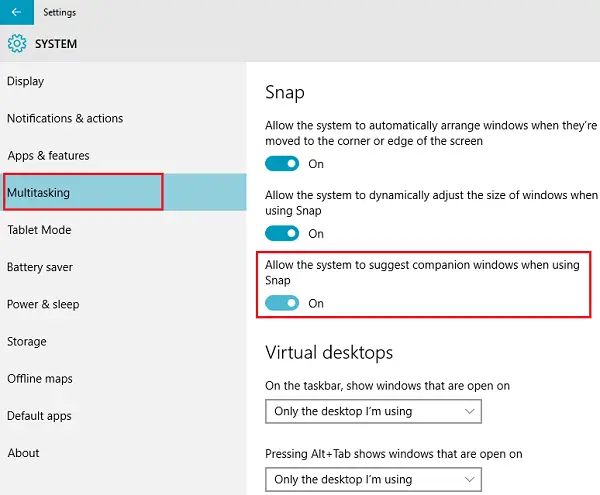

If so, click on the Multitasking menu and remove the tick from the When I snap a window, show what I can snap next to it checkbox. First, open the Windows Settings and make sure that you are in the System tab.

To enable or disable Snap Assist in Windows 11, you can follow these steps. However, in Windows 11, it is called When I snap a window, show what I can snap next to it. Earlier, in Windows 10, the option was called Allow the system to suggest companion windows when using Snap. To disable Snap Assist in Windows 11/10, you need to follow the above-mentioned steps. This will disable Snap Assist in Windows 10. Then, under the “Snap” category on the right, search the option reading Allow the system to suggest companion windows when using Snap. In the System Settings window, locate the Multitasking option. When there, chose ‘System’ from the Settings window. To disable Snap Assist, launch the Settings app from your Start Menu, or by searching for it with Taskbar Search bar. If you do not find this feature useful, you can disable Snap Assist feature in Windows 10. Next it prompts you through creating a trigger area, a spot on the screen that will make. However, if you are using Windows 10, you need to follow these steps. Click on Create New Snap Area (Use Active Window as Template).
#Snap assist tool windows 10 how to#
How to disable Snap Assist feature in Windows 11 It comes into play only when you have half or quarter of your screen empty. One of Windows 10s most important contributions to split-screen multitasking is Snap Assist, which makes it easier to select an open application window. If you snap a window to one side, Windows 10’s Snap Assist will arrange the other open windows in the remaining blank space of your computer screen as thumbnails. This insight lead us to ask: instead of making you hunt for the second window to snap, why not present a list of recently used windows up front? This is the fundamental idea behind Snap Assist in Windows, says Microsoft. When arranging two windows side-by-side, we noticed in practice that this scenario frequently involved snapping the first window and then spending time wading through other windows on screen to find the second one to drag and snap.
#Snap assist tool windows 10 windows 7#
On the other hand, if you snapped a window on Windows 7 or 8, the Windows OS just displayed the empty space and waited for you to snap a second app. It then allows you to click one of them and have it snapped to the left or right side of the screen. In Windows, when you use the Snap Assist feature to snap an app with the mouse, it shows up instantly and displays a thumbnail list of your open windows. It’s of great use as it allows you to juggle apps, arrange open windows, resize windows by simply dragging and dropping them to the edges of the screen. The feature wasn’t noticed much in Windows 8, but eventually resurfaced in 8.1 when the feature was enabled for Windows Store apps. The Snap feature – a window management feature introduced in the earlier version of Windows has been improved in the latest version viz.


 0 kommentar(er)
0 kommentar(er)
